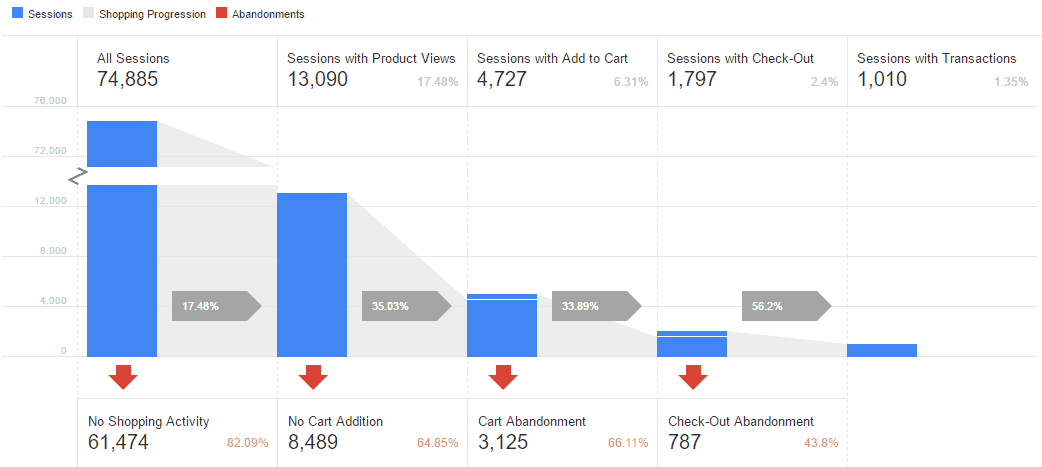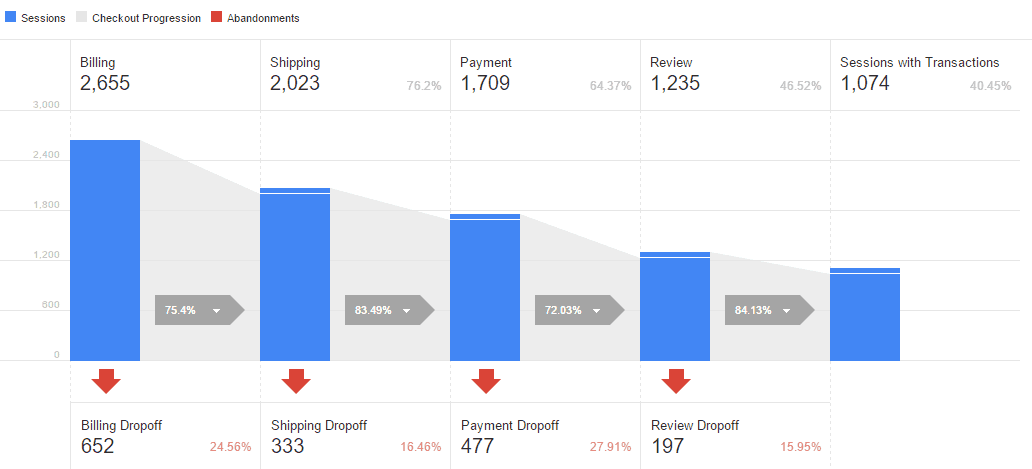Drive Ecommerce Revenue with Google Analytics 360
October 04, 2016
6 Minute Read

Previous posts in this series have looked at how Analytics 360, or A360, provides “High Definition” data for the clearest picture of online user activity and enhances DoubleClick campaigns. In this post, let’s look at how it can inform Ecommerce efforts to improve the customer experience and drive revenue growth.
Analytics 360 and Ecommerce
Google offers two analytics application: it’s free version, Google Analytics standard, and A360. While the standard version offers many useful features, businesses engaged in Ecommerce often find it lacks the most vital information.
For example, does Google Analytics standard provide answers to the following questions:
- What is your cart abandonment rate?
- What is the most abandoned product?
- How many returns do you have?
- How many coupon redemptions do you have and of which type?
- What % of your traffic had viewed a specific product list?
- What’s your most popular product category?
- How many impressions and clicks did you have on your most recent banner promotion on your home page?
If you look at your account and realize you can’t, don’t worry. Most businesses can’t. In many cases, Google Analytics doesn’t provide enterprise level Ecommerce companies the best data results.
How to Identify if Google Analytics Does More Harm Than Good
Data and dollars are inseparable for Ecommerce companies. Here’s how to determine if you have a data problem.
Take your revenue and total transaction number in Google Analytics and compare it to your actual numbers. Then figure out the percentage of difference. If it’s bigger than 1%, then the data from Google Analytics may be pointing your digital marketing efforts in the wrong direction.
Worse than this, you may not be seeing the real picture of how your buyers and non-buyers behave on your site. Beyond transactions, revenue and conversion rates, customer behavior reveals what attracts them and convinces them to spend their money – and what turns them off and leads to cart abandonment. Customer behavior exposes the pain points in your funnel.
The answer lies in getting the most accurate data possible. That’s what the robust reporting of A360 delivers.
Reports in Analytics 360
To understate it, connecting marketing campaigns from analytics tools to an Ecommerce back-end can be tough. If you go through the effort, you should expect accurate data. With that in mind, the advanced reporting from A360 delivers on the expectations.
Ecommerce marketers can get shopping behavior reports:

Here we can see we lost 98% of buyers during check-out! Fortunately, we can dig a little deeper.

This checkout funnel report reveals billing and payment experiences the biggest drop-offs. Armed with this data, targets can be set and adjustments made to improve results.
Additional reports tracking product and sales results include Product List Names (to track views and CTR by product name) and Internal Promotion Tracking (to monitor campaign views and response). Highly accurate Ecommerce data can then be used for proper attribution reporting, ROI reporting of channel conversion and custom data attribution modeling to identify the paths buyers take to arrive at a transaction.
Find the Difference, Then Ask This Question

The BFO Team
Here at BFO, we're always striving to bring you the latest and greatest in digital marketing insights and education. We're not ones to brag, but we've been lucky enough to be featured in all sorts of fancy publications and media outlets, strutting our stuff and showing off our industry expertise.
CATEGORIES
SUBSCRIBE TO OUR BLOG
Stay up to date with the latest industry best practices in digital marketing!























.png?width=339&height=179&name=Webinar%20Banner%20(1).png)



.png?width=339&height=179&name=July%20Webinar%20(Newsletter).png)

.png?width=339&height=179&name=Webinar%20Banner-April-02%20(1).png)
%20(4).png?width=339&height=179&name=Webinar%20Banner-May-02%20(1)%20(4).png)




.png?width=339&height=179&name=March%202023%20Webinar%20Ad%20(autoresponder).png)

















































